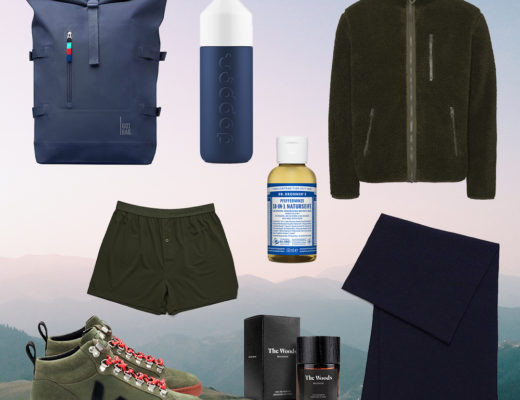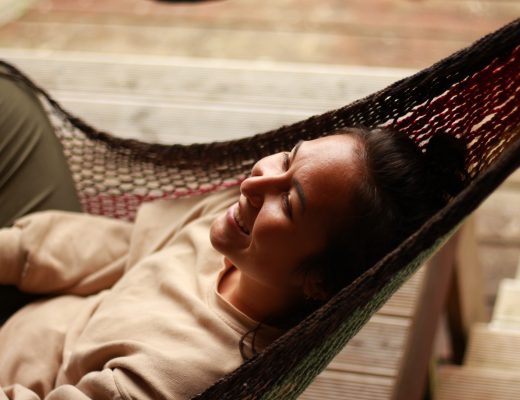Wenn es um die Frage nach unserem liebsten Schuhlabel geht, müssen wir nicht lange überlegen: Seit Jahren sind wir schwer verliebt in Veja! Dass die Kreationen des französischen Sneakerlabels unsere grünen Mode-Herzen höher schlagen lassen, ist nicht verwunderlich, schließlich werden die Schuhe von Veja in Brasilien unter nachhaltigen und fairen Bedingungen produziert, ohne jedoch den ästhetischen Anspruch aus den Augen zu verlieren. Die Geschichte von Veja ist die zweier Freunde und einer Vision: Sébastien Kopp und François-Ghislain Morillion waren erfolgreich in der New Yorker Finanzbranche, arbeiteten beide bei namenhaften Banken, bevor sie eines Tages aufwachten und beschlossen aus ihrem bisherigen Leben auszusteigen. Uns erzählt Gründer François im Interview vom Einstieg in die Schuhbranche, dem Veja-Erfolgsrezept und den Stolpersteinen, die er und Kollege Sébastian, immer wieder aus dem Weg räumen müssen, um ihre Vision von Nachhaltigkeit, sozialer Verantwortung und Sneakerlove zu leben.
glore: In 2004 you started Veja with the vision of creating an ethical and ecological fashion brand. What motivated you to do so?
François: After travelling the world studying sustainable development projects for one year we realized that there was too much marketing and not enough real action. We decided to make shoes with the best possible impact on our environment and our society. Sustainability inside the product, not just in the words.
glore: What did you aim to achieve when you founded Veja and which important goals did you reach thus far?
François: Veja is an ongoing process. We started working with wild rubber and organic cotton, which are still our key materials and are sourced from a now well establish fair trade supply chain. In 2013 we expanded our pallet of materials with recycled plastic bottle mesh, upcycling fish leather and recycled cotton. This also allowed us to add other shoe styles to our product range, including retro runners.
glore: What is the difference between conventionally produced sneakers and your sustainable fairtrade sneakers?
François: All our products are designed with the intention of having a positive impact :
- All our soles are made with wild natural rubber from the amazon forest (around 40% of the total composition).
The rubber tapper receives a fair price, allowing an adequate living standard for the workers. Thus, we prevent further deforestation for crop growing or cattle keeping.
- All our shoes have recycled or organic cotton lining. Recycled cotton is a fiber sourced from the leftovers of the Brazilian textile industry. We started to include it due to of a lack of organic cotton from subsequent draughts in the cotton production region. Our organic cotton is harvested by 400 families that respect the principals of agroecology.
- All our shoes are made at one partner factory in the south of Brazil. Working conditions are decent: working shifts of 8 hours a day, extra hours paid, unionized workers…
Unlike most factories in China, workers don’t sleep on their work place. They return back home every night.
Veja verifies labor conditions with a bi- annual social audit carried out by FLO-CERT GmbH.
- All our mesh is produced from recycled plastic bottles (PET). The bottles are collected in the south of Brazil (Sao Paulo – Rio), then sorted and mechanically transformed into PET flakes at a facility in Sao Paulo. The flakes are then extruded into polyester fiber, and then into thread.
- Each season, we include special materials in the collection, such as jute based mesh, natural indigo, upcycling materials…
- Veja logistics is handled by a social integration project with people in the suburbs of Paris. They receive mid-time training in order to reintegrate themselves into the job market.
glore: Which challenges are you facing in the textile supply chain trying to realize your vision of a sustainable and fairtrade sneaker label? (Also concerning the vegetable leather tanning process, finding producers that do vegetable tanning etc.)
François: For textile materials (organic cotton canvas, b-mesh and j-mesh), Veja established an integrated supply chain, buying raw materials and transforming them into fabrics.
When it comes to leather the supply chain is less transparent and involves meat multinationals and their intermediaries. This makes it hard to achieve an integrated supply chain. Once we started working with leather, we developed a vegetal tanned leather with a partnering tannery. However, we used this leather only until 2014 as our partner started to have trouble finding non-chrome raw materials (wet-white leather). Eventually this had a direct impact on the prices of our shoes, which went up tremendously. We decided to limit the usage of vegetal tanned leather to our premium bastille line, in order to keep our prices stable for the main line.
However, we are addressing the leather issue by putting more emphasis on :
- Vegan and natural alternatives
- Integrated supply chains by collaborating with cattle raisers
- Vegetal tanning
glore: Unlike other big players on the sneaker market you don’t spend money on advertising campaigns.
This cost saving allows you to bring shoes to the market that aren’t more expensive than sneakers from other popular sneaker brands. If it’s not marketing campaigns – what do you think is Veja’s secret of success?
François: In brazilian, Veja means „look“. Look behind the product! We believe that style is the key access to our brand, people are attracted by the design of our products. Once they learn about the idea behind the product they become Veja fans.
glore: Where did you get your inspiration for the autumn/winter collection 2016? What is new/special about the collection?
Francois: Regarding the AW16 collection minimalism is the key word. Graphic black and white mixed with natural tones.
glore: What is the process like when you create a new sneaker model like the V10? Can you explain us the way from the first idea to the launch of the sneaker?
François: We always start with the same question: what do we want to wear? We wanted to wear a more structured shoe, based on a thick, stitched sole. We started designing a very massive shoe and then we corrected the shape with 3 intermediary prototypes. Within 6 months we were satisfied with the aesthetics and only had to adjust some technical details in order to improve overall comfort.
Vielen Dank François, dass wir dir so viele Löcher in den Bauch fragen durften!










Ein Kommentar
Excellent workmanship! Beautiful blade!